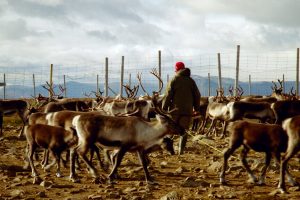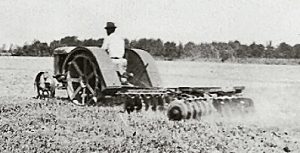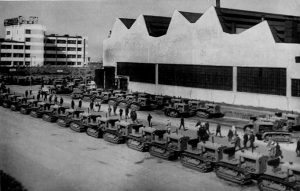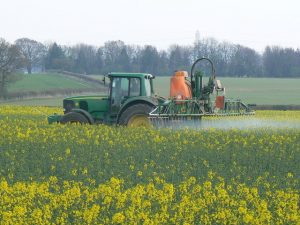The Agricultural Revolution was an expansion of agricultural production in Britain due to the increase in labor and land productivity between the mid-17th and late 19th centuries.

Image source: https://en.wikipedia.org/wiki/Agriculture#/media/File:Maler_der_Grabkammer_des_Sennudem_001.jpg
The increased food supply contributed to rapid population growth in England and Wales, although domestic production increasingly gave way to food imports in the nineteenth century as the population more than tripled. The increase in productivity, adding to the urban workforce on which industrialization depended, accelerated the decline in the agricultural share of the workforce: the Agricultural Revolution was therefore cited as the cause of the Industrial Revolution.
Before The Revolution
Before the Industrial Revolution, agriculture workers labored six days a week, from sun up to sundown, just to keep their crops growing. Certain seasons were more demanding than others, specifically the plowing and harvest seasons. Because of the intensity and necessity of agricultural labor, it was the largest employment source in Europe. Men, women, and children worked side by side to feed the country. Often if the father was a farm owner and worker, his entire family labored alongside him. Working in agriculture was not just a job but often a lifestyle for families.
Contribution to industrial revolution
Because of the difficulty of agricultural work, it became necessary to innovate the agricultural industry, thus beginning the Agricultural Revolution which arguably started in the mid-18th century. The Agricultural Revolution helped bring about the Industrial Revolution through innovations and inventions that altered how the farming process worked. These new processes in turn created a decline in both the intensity of the work and the number of agricultural laborers needed. Because of the decline in the need for agricultural workers, many worked industrial jobs, further fueling the Industrial Revolution. At the beginning of the Agricultural Revolution, farmers chose to migrate to the city to work industrial jobs; however, as the decline in the need for agricultural workers grew, many were forced to look for work in the industries.

Reindeer herds form the basis of pastoral agriculture for several Arctic and Subarctic peoples.
Image source: https://en.wikipedia.org/wiki/Agriculture#/media/File:Reindeer_herding.jpg

Image source:https://en.wikipedia.org/wiki/Tractor#/media/File:Ivel_Tractor_1902.JPG

Image source: https://en.wikipedia.org/wiki/Tractor#/media/File:FordsonFarmacp.jpg
The importance of crop rotation
The development of the Norfolk four-course rotation was one of the most important innovations of the British Agricultural Revolution and allowed to increase crop and livestock yields by improving soil fertility and reducing fallow. This system allows the cultivation of several different types of crops in the same area in sequential seasons allowing restoration of plant nutrients and mitigates the accumulation of pathogens and parasites, it can also improve the structure and fertility of the soil by alternating plants with deep roots and plants with shallow roots. Turnip roots, for example, can retrieve nutrients from the depths of the soil. The Norfolk System rotates crops so that different crops are planted with the result that different types and amounts of nutrients are drawn from the soil as the plants grow. An important feature of this system is the use of manpower at times when demand was not at peak levels.

Image source: https://en.wikipedia.org/wiki/Tractor#/media/File:Chelyabinsk_tractor_factory_1930s.jpg
Other innovations
Robert Bakewell and Thomas Coke, two British farmers, introduced selective breeding as scientific practice in the mid-18th century and used it in breeding to stabilize certain qualities in order to reduce genetic diversity. Bakewell was also the first to raise cattle for meat. Some practices have intensified that have contributed to more productive use of the land, such as the conversion of some pastures into arable land and recovery of swamps and pastures. Other developments have come from Flanders and the Netherlands, the region that has become a pioneer in canal construction, soil restoration, maintenance, and drainage soil, and remediation technology. Finally, the water-meadows were used between the end of the 16th and the 20th centuries and allowed the early grazing of cattle after wintering on the hay.

Image source: https://en.wikipedia.org/wiki/Agriculture#/media/File:Crop_spraying_near_St_Mary_Bourne_-_geograph.org.uk_-_392462.jpg
Info sources:
